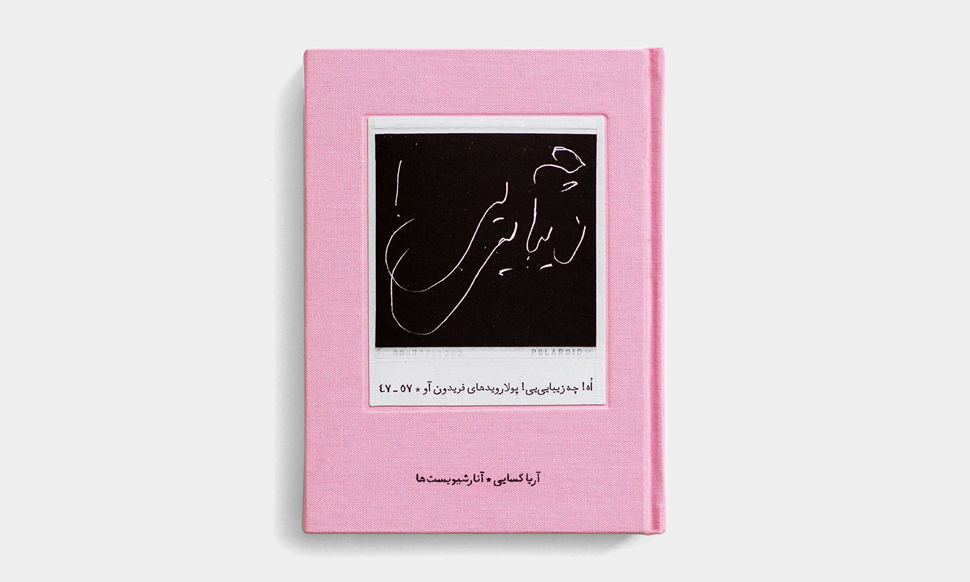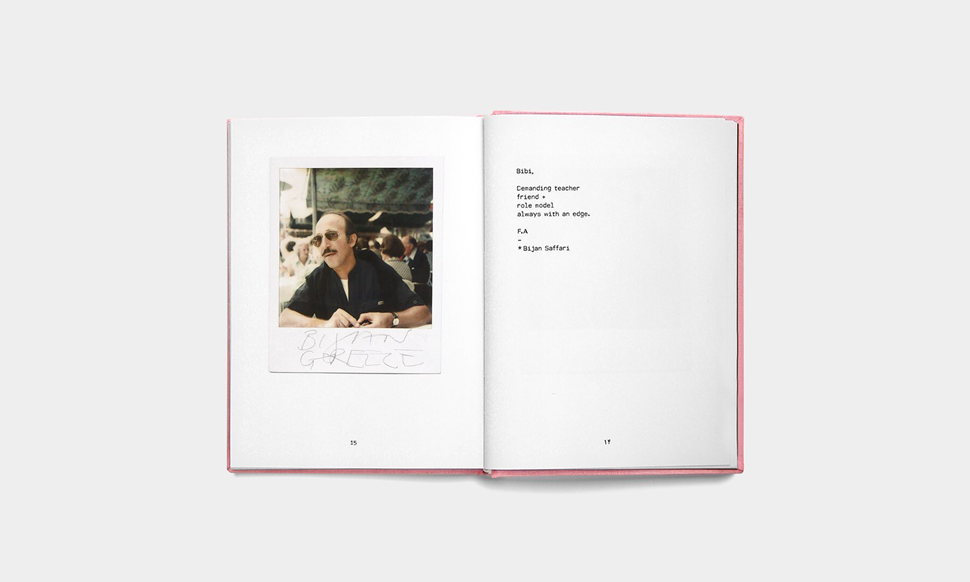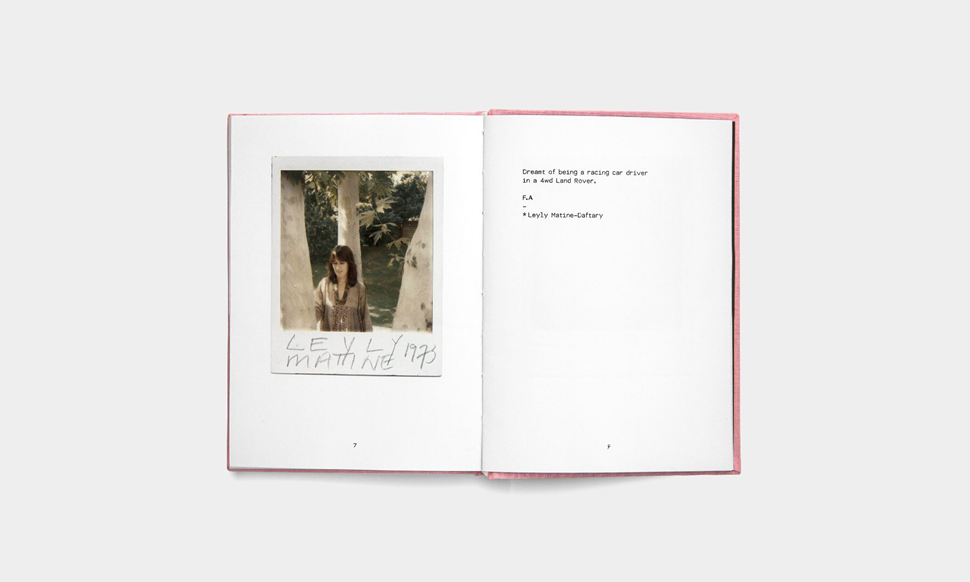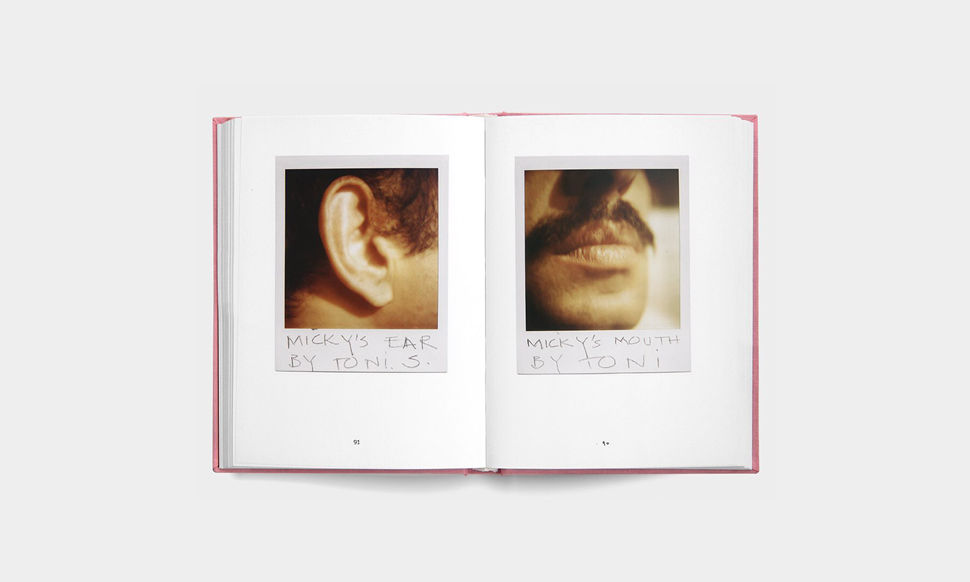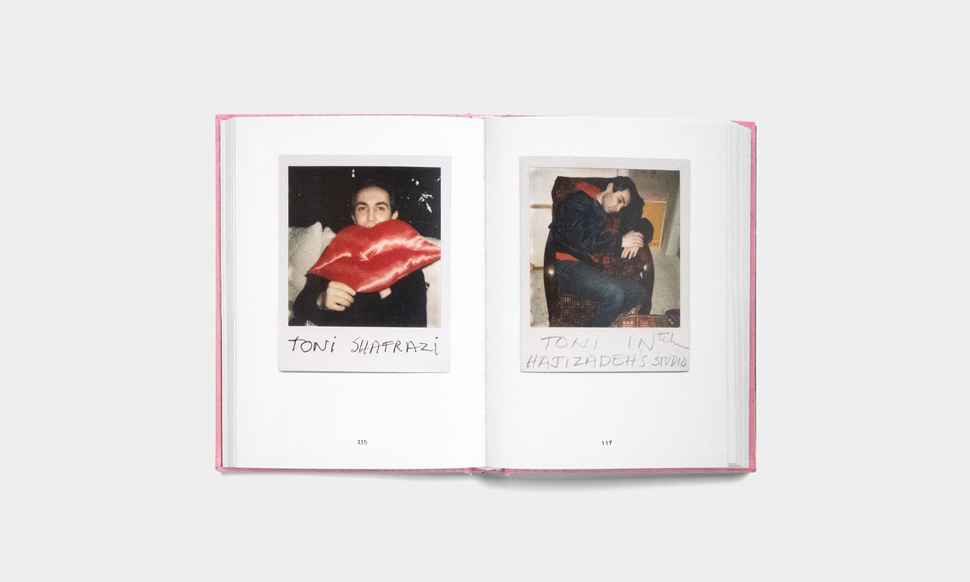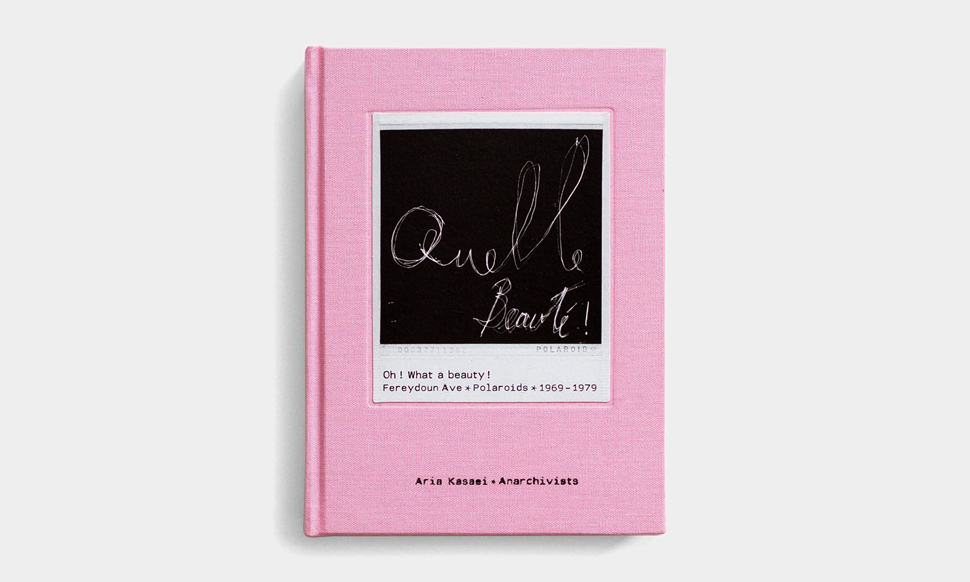A Review on a Book by Fereydoun Ave
Oh! What a beauty! Fereydoun Ave Polaroids 69-79
"Oh! What a beauty! Fereydoun Ave Polaroids 69-79" is the title of Fereydoun Ave's book of Polaroids which was published by Aria Kasaei in collaboration with Studio Kargah and was unveiled in the winter of 2019 in the commemoration ceremony at The British Museum. The book consists of Polaroids of Fereydoun Ave from 1969 to 1979 which were taken in various places such as Vanak neighborhood, Tehran, the Saint-Germain boulevard, Paris, Syros Island, Greece, etc. These Polaroids, which include private and family photographs of Ave, have been selected from his personal archives and arranged in a specific order in the pages of the book. This particular arrangement starts with the photos of his grandmother and mother and continues with the photos of his friends and acquaintances.
Looking at the photographs, we encounter familiar and prominent figures of Iranian art imprinted on square format photographic films of the common Polaroid cameras of the time. The figures who have shaped the art space of those years in galleries, festivals, and theatres. Artists who have been seen and performed at Shiraz Festival of Arts, Kargah-e Namayesh (Theater Workshop), Zand Gallery, and other cultural communities like these. In the photos of the book, we face some figures such as Leyly Matine Daftary, Ardeshir Mohassess, Ashur Bani Paal Babilla, Bijan Saffari, Andy Warhol, Charles Hossein Zenderoudi, etc. which each of them appears in a number of photographs and Ave has written short phrases about them on the entry of pictures.
In the opening lines of the book, we come across a writing that raises questions about the nature and formation of the book and the sharing of Ave's memorial photographs. Some questions beneath this main question that what's the use of Fereydoun Ave's memorial photo album? This question is repeated in the mind of the audience by looking at the pages of the book which consist of Ave's photos and phrases.
Here, there may be needed to distinguish between Fereydoun Ave as a familiar artist in the Iranian art scene and as the photographer of these somehow intimate Polaroids. In the photos of this book, we aren't faced with Ave as a fine art photographer and someone who deals with personal and intimate lives. Ave's camera lens in these photos, like those of people like Nan Goldin, Larry Clark, Dash Snow, etc. doesn't seek taking photos of friends and unseen angles of certain people's lives; rather, most of them are literally like personal photographs of a human being throughout different periods of his life that have been recorded by themselves and their loved ones and if we don't consider the background and position of the people present in the photos, they don't have a distinctive characteristic from them and of course, they do not have a similar function. If we look at most of the photos, the people present in them are normally sitting or standing in front of the camera and they show gestures of respect. Some of them are smiling and others are in serious and determined poses. Also, some of them don't pay attention to the camera and are busy doing their simple, personal works such as reading books which shows their comfort and familiarity with the photographer's camera. As it is common in snapshots and personal photos, the subjects here are placed in the golden points and center of attention, and in general, they can be regarded as simple pleasant narratives of those who have spent some time with the photographer.
The more we deepen in the photos, people, and their eras, the layout of the photographs (which we briefly mentioned) reveals itself. The series starts with family and continues to friends and then self-portraits and finally ends with photos of parties and gatherings which shows Ave and his friends. The final photo shows an empty table accompanied by the text "The party is over" on the other page. The layout switches from a highly family and personal space to other people. After that, the photographer is faced with himself and at the end with a group including himself and others.
But does it end here? Is the importance of the book's photos because of the subjects and their era? The questions that can be considered as an appendix to the initial questions and increase their amount each time by rereading the book. What's clear is that the book has begun a journey and a new context has been provided through the photos' rearrangement and juxtaposition, to give photos a new meaning. Oh! What a beauty! takes the audience to light-years away and places them alongside individuals and lives shaped a cultural minority of people. A lovely and tender journey that recalls fugitive moments from a pleasant era.
Design and arrangement: Aria Kasaei – Anarchivists-1st | Page layout/ Image edit: Ashkan Ghasemi | Studio Kargah Project – Tehran 2019 | This book has been published in collaboration with Dastan Gallery, Aassttiinn, and Studio Kargah | Images copyrights: the Instagram account of Studio Kargah, which was published on December 20, 2020.



